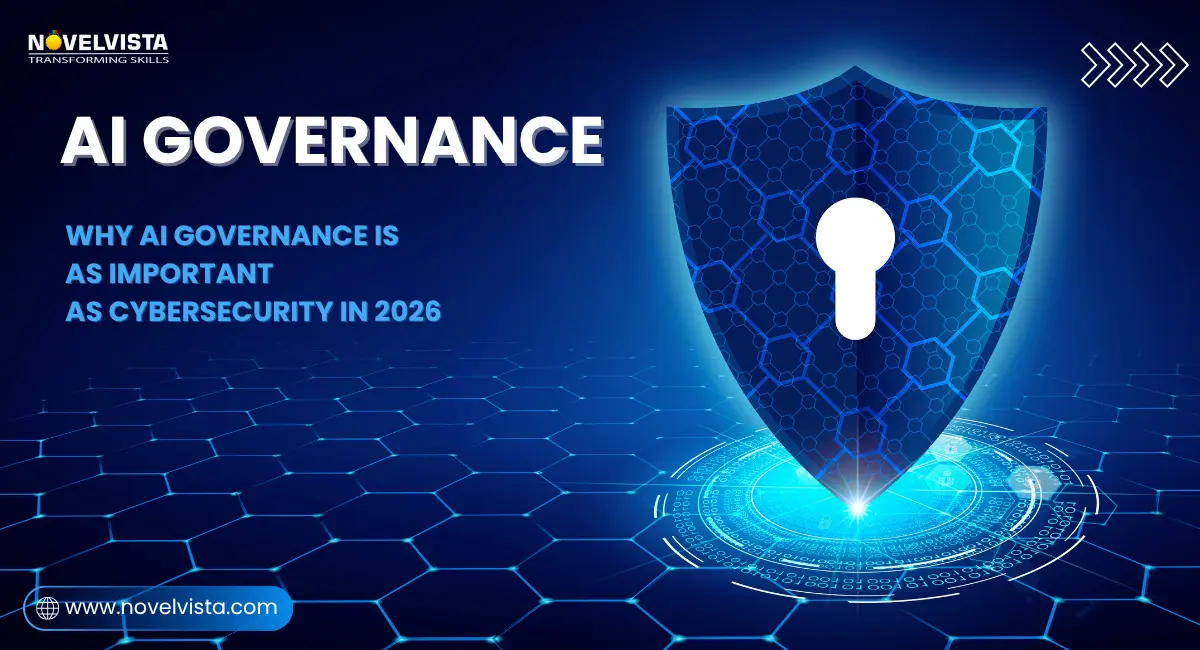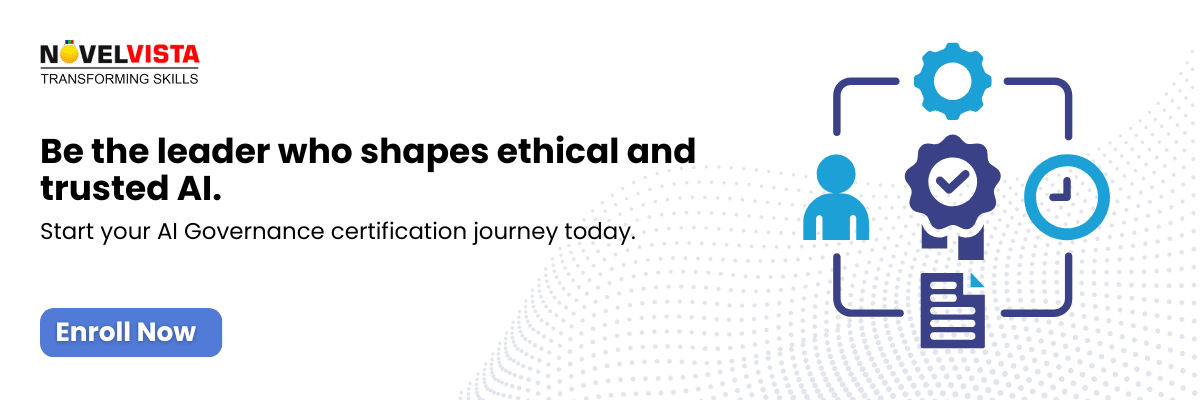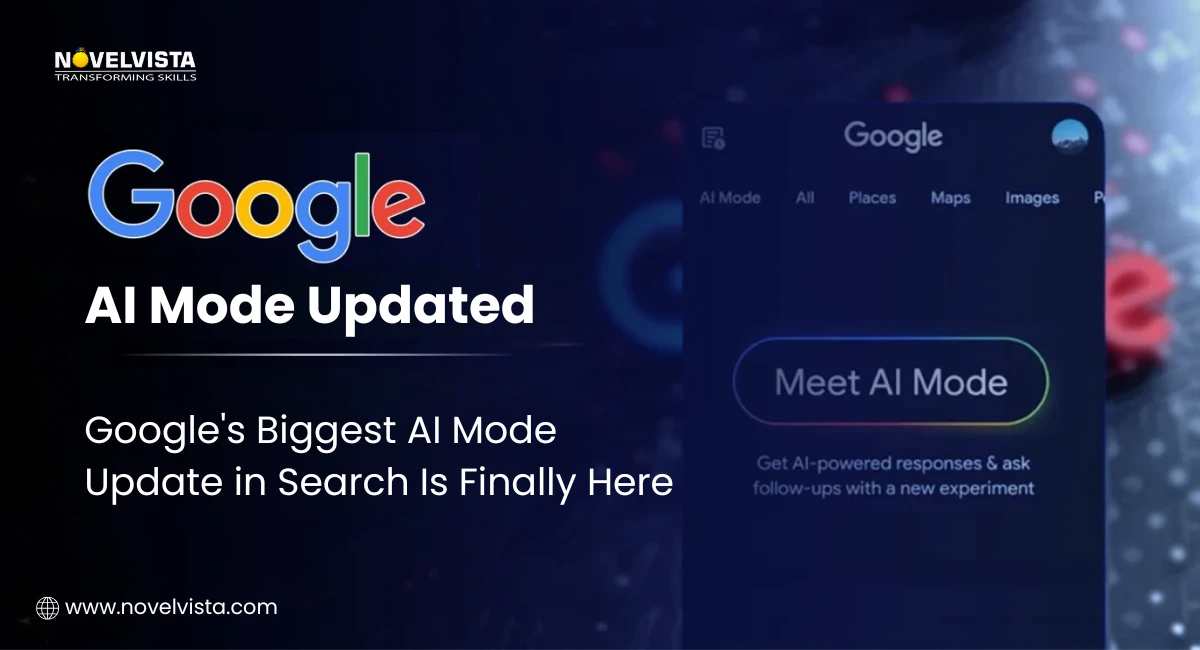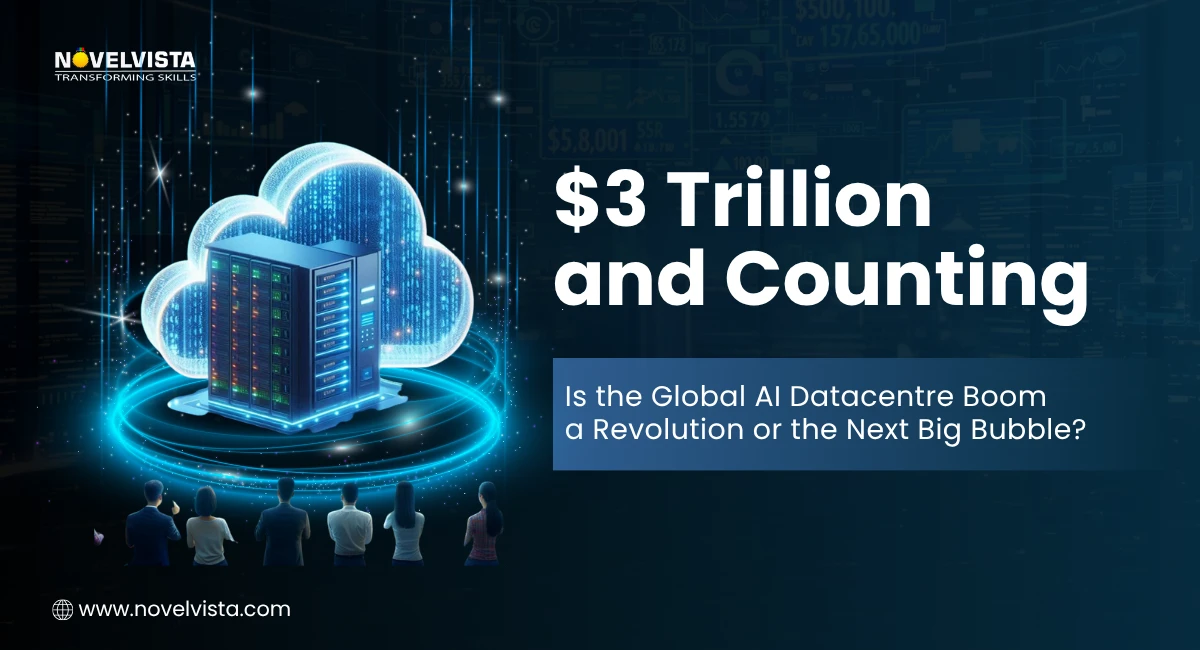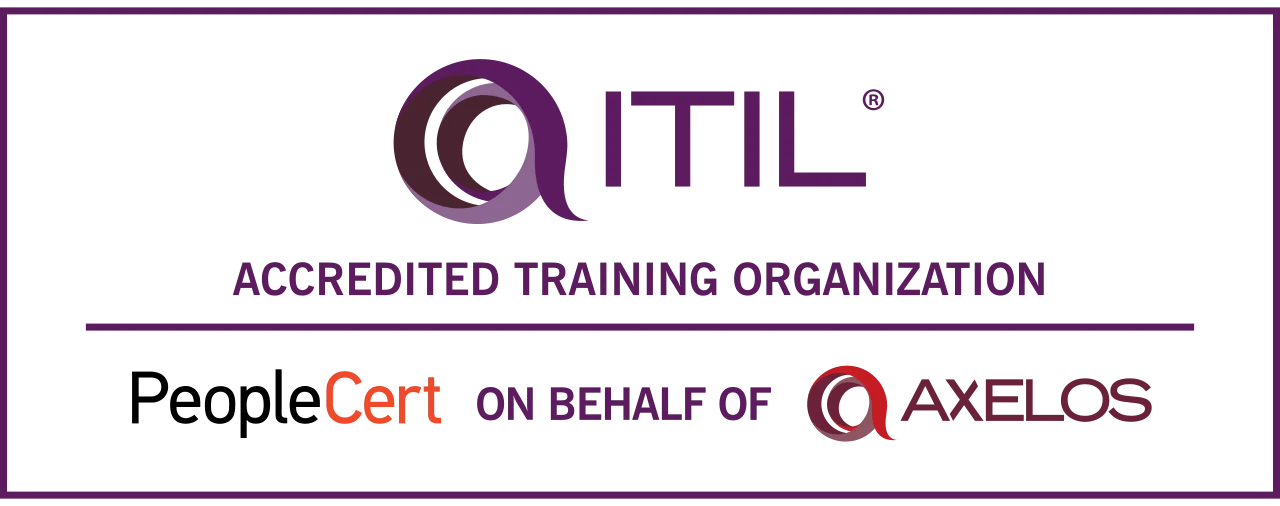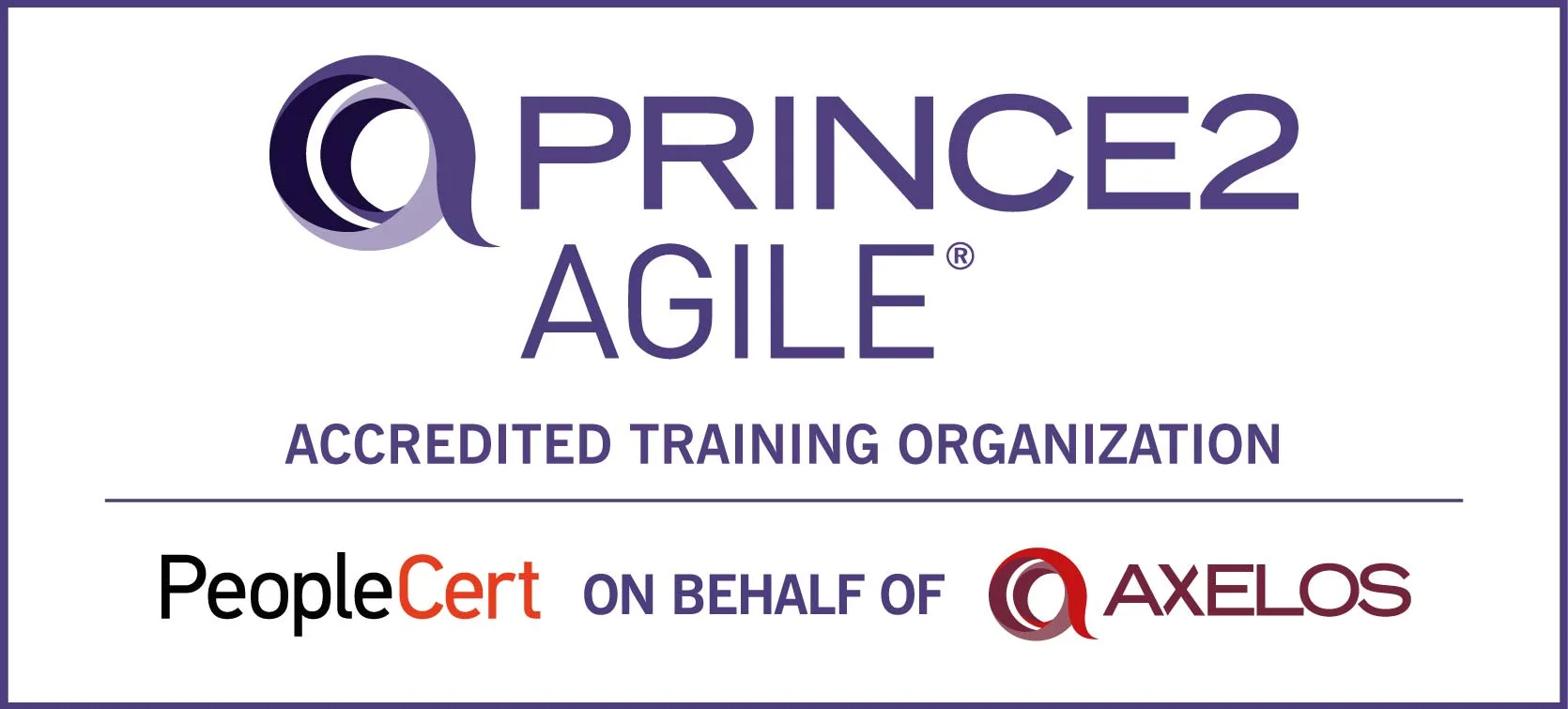- What Is AI Governance?
- Why the Urgency Now? The Global Push for Responsible AI
- The Parallels Between Cybersecurity and AI Governance
- The Risks of Ignoring AI Governance
- Building an AI Governance Framework for 2026 and Beyond
- The Future of Cybersecurity and AI Governance
- Why Now Is the Time to Act
- Next Step: Build the Skills That Secure the Future
Remember when AI was just a buzzword used in innovation slides? Well, that phase is long gone. Today, AI isn’t just innovation — it’s infrastructure. It’s running inside your customer service chatbots, financial models, HR screening tools, and even national defense systems.
But here’s the twist — while AI builds the future, it also quietly creates a new kind of risk. One that can’t be solved by firewalls and passwords alone.
If cybersecurity protects systems, AI governance protects decisions.
And both are equally about trust. Cybersecurity shields your data and networks; AI governance shields your ethics, reputation, and accountability.
By 2026, experts predict that AI governance will be as important as cybersecurity, simply because AI introduces risks that cybersecurity alone can’t handle — bias, lack of transparency, and unpredictable behavior. These aren’t “IT issues.” They’re trust issues.
AI’s growing influence means companies need not just security teams, but AI governance frameworks — guardrails to ensure AI stays responsible, fair, and transparent.
What Is AI Governance?
Let’s keep it simple: AI governance is the set of rules, policies, and practices that make sure AI systems act responsibly.
It’s like cybersecurity — but instead of protecting your data from hackers, it protects your organization from bad AI behavior.
An effective AI governance framework usually focuses on five things:
- Transparency – You should know what your AI system is doing and why.
- Fairness – It shouldn’t discriminate or make biased decisions.
- Accountability – Someone must take responsibility when AI gets it wrong.
- Explainability – You should be able to explain how a model made its choice.
- Data Integrity – The information feeding your AI must be accurate and secure.
These principles are now being formalized through global standards — like ISO/IEC 42001, the world’s first AI Management System Standard, which helps organizations build governance practices into their AI operations.
Think of it as the ISO 27001 for AI — not about cybersecurity, but about the ethical and operational reliability of intelligent systems.
When companies connect AI governance with corporate decision-making and compliance, they don’t just avoid mistakes — they gain trust. And in the age of automation, trust is currency.
Why the Urgency Now? The Global Push for Responsible AI
If you’ve noticed, every government and regulator seems to be racing to build new AI laws. And there’s a reason for that.
By 2025–2026, the world will enter the “AI compliance” era, where organizations must prove their AI systems are fair, transparent, and safe — much like how they already prove their networks are secure.
Here’s what’s driving that wave:
- EU AI Act (August 2026): This landmark law enforces strict rules for high-risk AI systems, requiring transparency, documentation, and human oversight. If your AI makes life-impacting decisions — say, in finance or healthcare — you’ll have to prove it’s trustworthy.
- India’s MeitY Advisory Framework: India is drafting national guidelines to promote responsible AI, with a strong focus on explainability, bias detection, and ethical data use.
- U.S. Executive Order on Safe and Trustworthy AI: Signed in late 2023, it pushes for safety testing, watermarking of AI-generated content, and accountability across industries.
In other words, governments aren’t waiting for companies to “self-regulate” anymore. They’re turning AI governance into compliance — similar to how cybersecurity audits became mandatory after data breach scandals.
And this shift means that AI governance will soon sit right next to cybersecurity in every organization’s risk dashboard.
The Parallels Between Cybersecurity and AI Governance
If cybersecurity keeps hackers out, AI governance keeps bias and chaos out. Both are about protecting the organization — but they guard different layers of risk.
Let’s break it down in simple terms:
Aspect |
AI Governance |
Cybersecurity |
Primary Goal |
To ensure AI systems are ethical, responsible, and transparent. |
To protect data and systems from breaches and attacks. |
Scope |
Manages risks in AI models — bias, explainability, ethical data use. |
Focuses on networks, databases, and infrastructure security. |
Risk Focus |
Bias, lack of transparency, unpredictable AI behavior. |
Malware, phishing, ransomware, and system vulnerabilities. |
Accountability |
Ensures humans remain accountable for AI’s decisions. |
Assigns responsibility for protecting data and responding to threats. |
While cybersecurity focuses on keeping outsiders out, AI governance ensures your own systems don’t harm from within.
Think of it like this: cybersecurity secures the door; AI governance checks what’s happening inside the room.
And as AI becomes more integrated into business processes, these two areas are starting to merge.
Future risk registers will include not only “cyber risks” but also “AI ethics risks”. Auditors will look for both network vulnerabilities and algorithmic biases.
That’s why organizations are beginning to align ISO 27001 (for cybersecurity) and ISO 42001 (for AI governance) under one integrated management system.
It’s the dawn of a new era — where cybersecurity and AI governance work hand in hand to secure both systems and decisions.
The Risks of Ignoring AI Governance
Here’s the truth: AI is powerful, but it’s also unpredictable. And when organizations jump into using it without proper governance, the results can be damaging — both financially and reputationally.
Let’s look at a few real-world risks when governance takes a back seat:
- Bias and discrimination: AI can learn human biases from data and amplify them. A hiring model might unintentionally favor certain demographics, or a loan algorithm could reject applicants based on patterns it can’t even explain.
- Hallucinations in generative AI: As seen in Deloitte’s recent case, AI models can confidently produce completely false information — fake references, made-up quotes, or wrong data — and present it like fact.
- Intellectual property violations: Without control, AI tools can reuse copyrighted data or produce derivative work that lands companies in legal trouble.
- Compliance penalties: As new laws like the EU AI Act come into force, weak AI oversight can lead to legal penalties or failed audits.
- Reputational damage: Customers and investors are increasingly sensitive to how AI is used. One AI-related scandal can ruin brand trust overnight.
To put it simply, just like no company today can afford a data breach, soon no one will be able to afford an AI breach.
That’s why AI governance isn’t a “nice-to-have” anymore. It’s becoming a must-have layer of protection — the ethical counterpart to cybersecurity.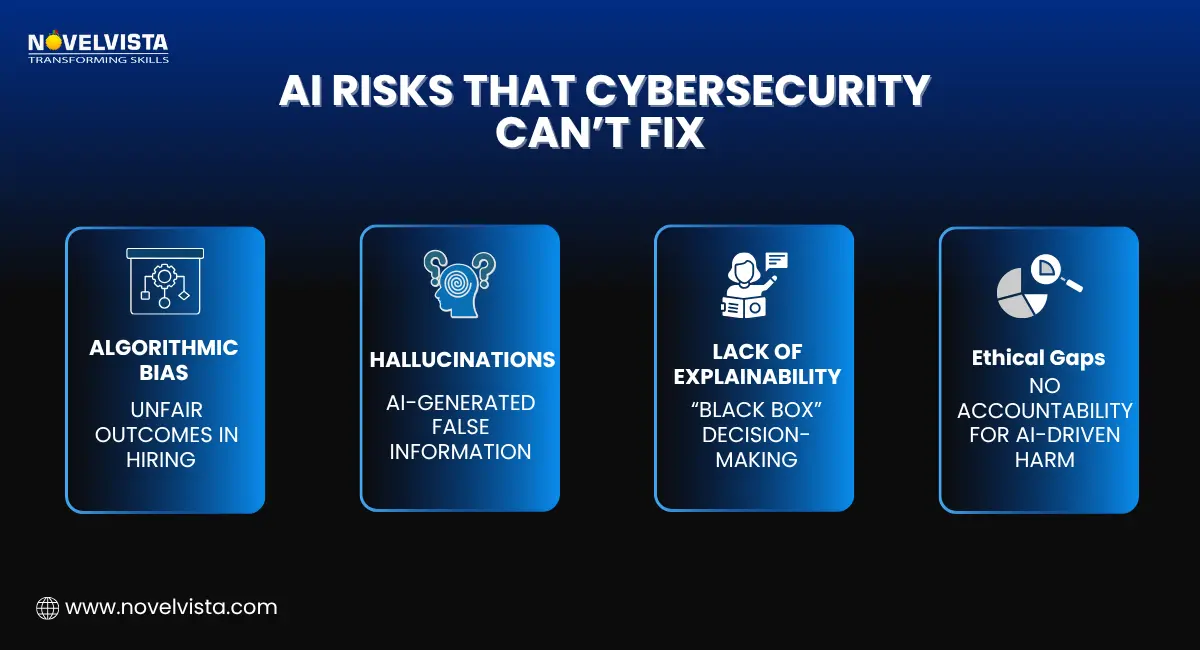
Building an AI Governance Framework for 2026 and Beyond
If AI governance is becoming as essential as cybersecurity, the next question is: How do you build it?
Here’s a simple blueprint for organizations preparing for the 2026 AI era:
1. Establish AI Governance Committees
Create a cross-functional group that includes data scientists, legal experts, ethicists, and IT security leads. Their job? Define how AI should be used, monitored, and disclosed within the company.
2. Align with Recognized Frameworks
Use ISO 42001 or NIST’s AI Risk Management Framework (AI RMF) as your foundation. These give you a structured way to identify risks, assign accountability, and document compliance — just like ISO 27001 does for cybersecurity.
3. Integrate Human Oversight
Always keep humans in the loop. Whether it’s an automated loan approval or a chatbot responding to customers, someone must have the authority (and skill) to step in, review, and correct AI output when needed.
4. Document Transparently
Use model cards, data lineage records, and explainability reports to describe how your AI systems make decisions. This helps internal reviewers, regulators, and customers understand how the AI thinks — and builds trust.
5. Conduct Regular AI Audits
Just like cybersecurity runs vulnerability scans, AI teams should run governance audits. Check for bias, fairness, and ethical risks at every update or retraining cycle.
This approach ensures that AI remains accountable, traceable, and reliable — no matter how advanced it gets.
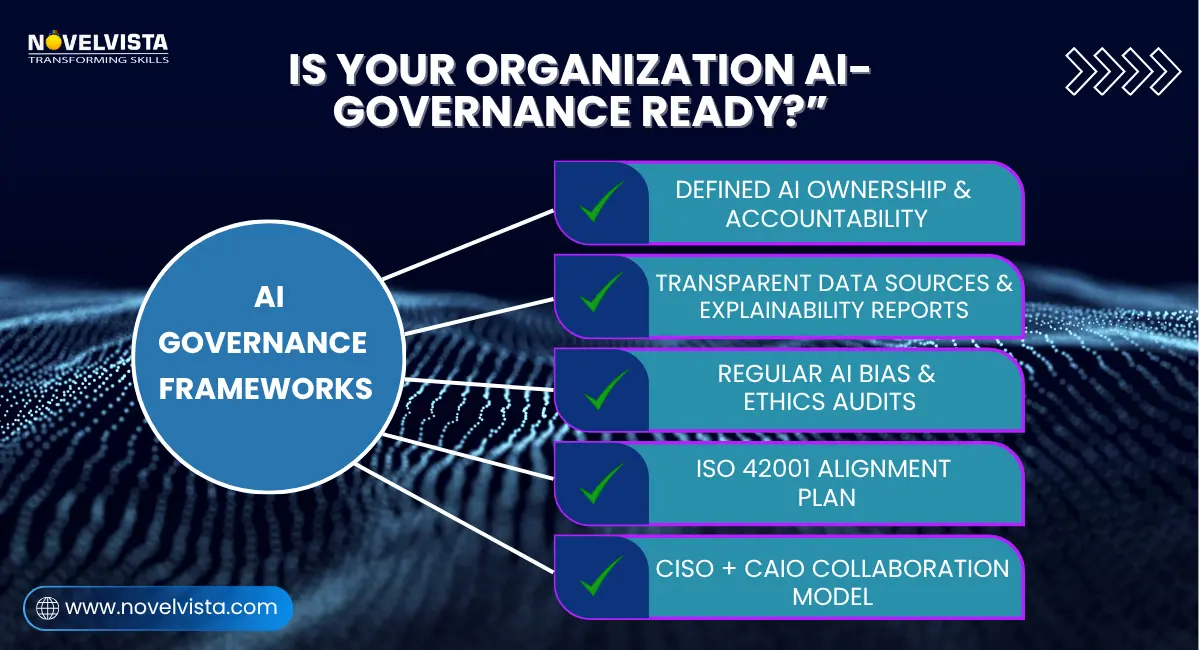
The Future of Cybersecurity and AI Governance
Cybersecurity and AI governance are quickly merging into one unified trust framework — where protecting systems and protecting decisions go hand in hand.
Cybercrime is rising at an alarming rate. According to Forbes, if cybercrime were a country by 2026, it would be the third-largest economy in the world, costing businesses around $20 trillion. It’s clear that security can’t be an afterthought anymore. (Source: Forbes)
At the same time, the AI in cybersecurity market — valued at $22.4 billion in 2023 — is expected to hit $60.6 billion by 2028, growing at a massive 21.9% CAGR. Organizations are investing heavily in AI to stay ahead of evolving threats. (Source: Markets and Markets)
But with AI becoming part of the defense, governance must evolve too. Expect to see Chief AI Ethics Officers working alongside CISOs, ensuring not only secure systems but also fair and transparent AI decisions.
Soon, we’ll see “AI watching AI” — advanced systems monitoring other AI models for bias or manipulation, much like antivirus tools detect malware today.
And as this convergence deepens, professionals skilled in both cybersecurity and AI ethics will be in high demand. The companies that blend security with ethics will lead the AI-driven future — because in the world ahead, trust will be the ultimate currency.
Why Now Is the Time to Act
By 2026, AI governance will define digital trust just as much as cybersecurity does today.
Businesses that move early will build safer, smarter systems that customers actually trust. Those who wait might find themselves buried in compliance chaos or public backlash when AI makes the wrong call.
This isn’t about fearing AI — it’s about managing it wisely.
The goal isn’t to slow innovation; it’s to make sure innovation doesn’t outpace responsibility. The smarter the AI, the smarter our guardrails need to be.
Next Step: Build the Skills That Secure the Future
AI governance isn’t just a corporate responsibility — it’s a personal opportunity.
Professionals who understand both AI risk and AI compliance will soon become the most valuable voices in the room.
So if you’re ready to lead that shift, it’s time to build the right skill set.
Explore NovelVista’s Generative AI in Cybersecurity Certification, Agentic AI Certification, and ISO 42001 AI Governance Certification programs.
These programs help you understand how AI models think, where they can fail, and how to keep them accountable — so you can design AI systems that are not just powerful, but also ethical, transparent, and trusted.
Because the future of digital trust isn’t just about keeping hackers out — it’s about keeping AI honest.
Download: The Human-in-the-Loop Framework Guide
Stop doubting AI results!
Learn a proven 3-step method to verify, refine, and trust AI-generated insights used by top auditors and AI professionals.
Author Details

Akshad Modi
AI Architect
An AI Architect plays a crucial role in designing scalable AI solutions, integrating machine learning and advanced technologies to solve business challenges and drive innovation in digital transformation strategies.
Course Related To This blog
Generative AI in Cybersecurity
Confused About Certification?
Get Free Consultation Call

